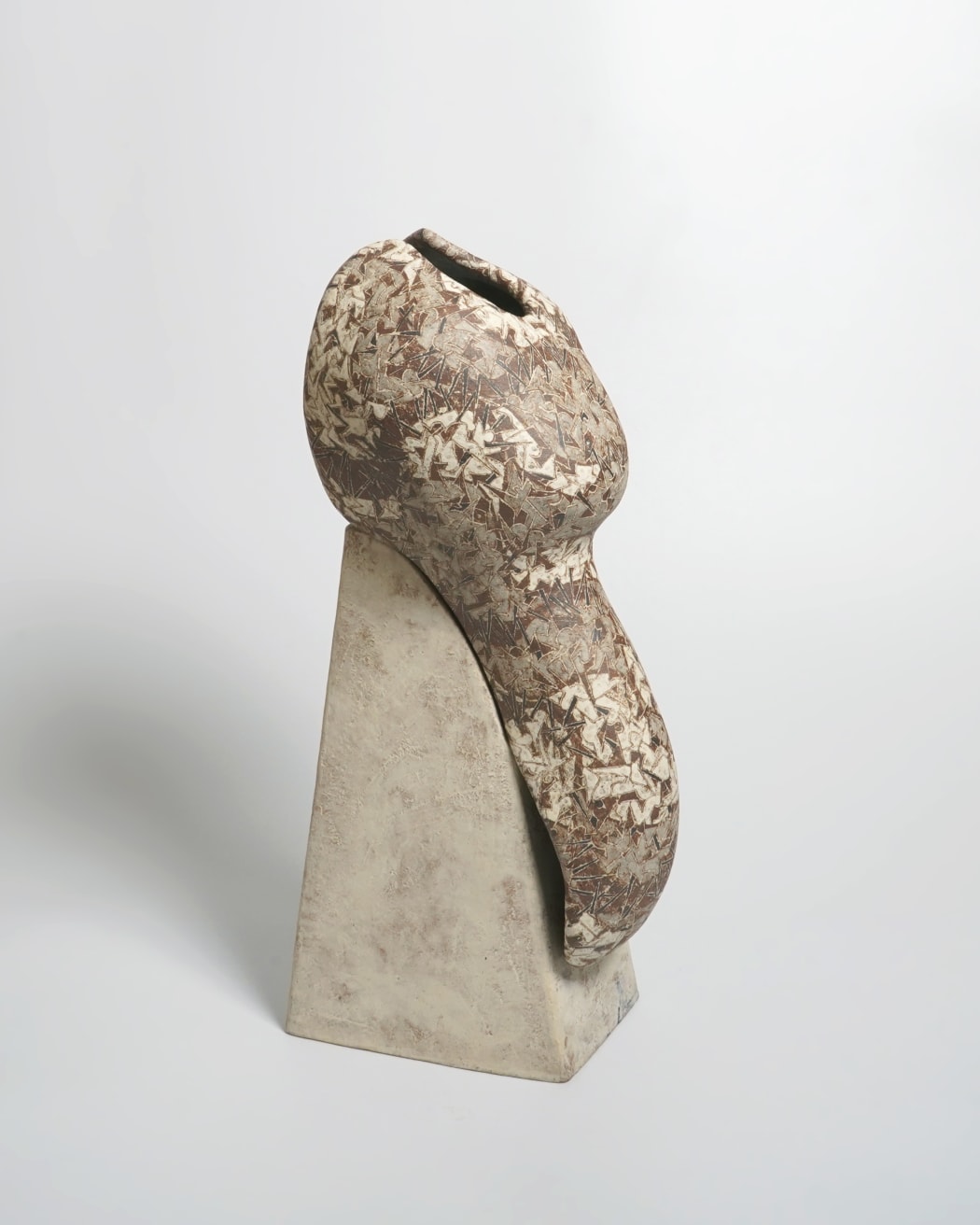
Pictured above is a vessel titled Ryu-San-Mon-Ki 流彡文台器, made in 1989 on display at our gallery space. This technique, which Wada called Ryu-San-Mon 流彡文, depicts a flowing pattern with undulating curved surfaces and somewhat animal-like shapes. The other technique (in the back) is called Hatsu-San-Mon 発彡文 a sharply angled pattern with a linear divergent direction.
On naming the San-Mon series, it's specific technique and work, Wada stated:
"The "San-Mon" series of works seems to have found a direction of expression using the clay as a material. My initial intention was to cover the entire form of the vessel with detailed patterns, so that the patterns themselves would become the material. It is the accumulation of marks caused by individual habits, and the process of turning these actions into material is the work of making things. The idea that the pattern is a tool for cutting out the form was born at this time.
The San-Mon pattern began as a detailed sketch of a cedar tree, but it eventually transformed itself in accordance with my own way of thinking, and became like my own writing style. The pieces that started out as San-Mon-Ki 杉文器 came to be called San-Mon-Sekki 杉文炻器 , and those whose appearance was altered by the addition of white or black clay were called Saido-San-Mon 彩土杉文. The word "Saido" 彩土 was coined from the Japanese word "Saido,"再度 which means "Once again," and I am amused to see the word "Saido" being used here and there afterwards.
The Saido-San-Mon 彩土杉文 pattern was tried in a variety of forms, including round, wavy, and angular, but eventually, by defining the directionality of the pattern, the form came to show two symmetrical angles.
One is called Ryu-San-Mon 流彡文 a flowing pattern with undulating curved surfaces and somewhat animal-like shapes, and the other is called Hatsu-San-Mon 発彡文 a sharply angled pattern with a linear divergent direction. At that point, the character for San 杉 was changed to "彡. I tend to prefer to use letters that describe abstract states in the names of my works rather than letters that describe specific things. This is because I don't want the viewer to be caught up in the specificity of the letter. The character "彡" has the meaning of an element that is the source of various representations, and I am happy to have discovered this very simple character, which I like."
